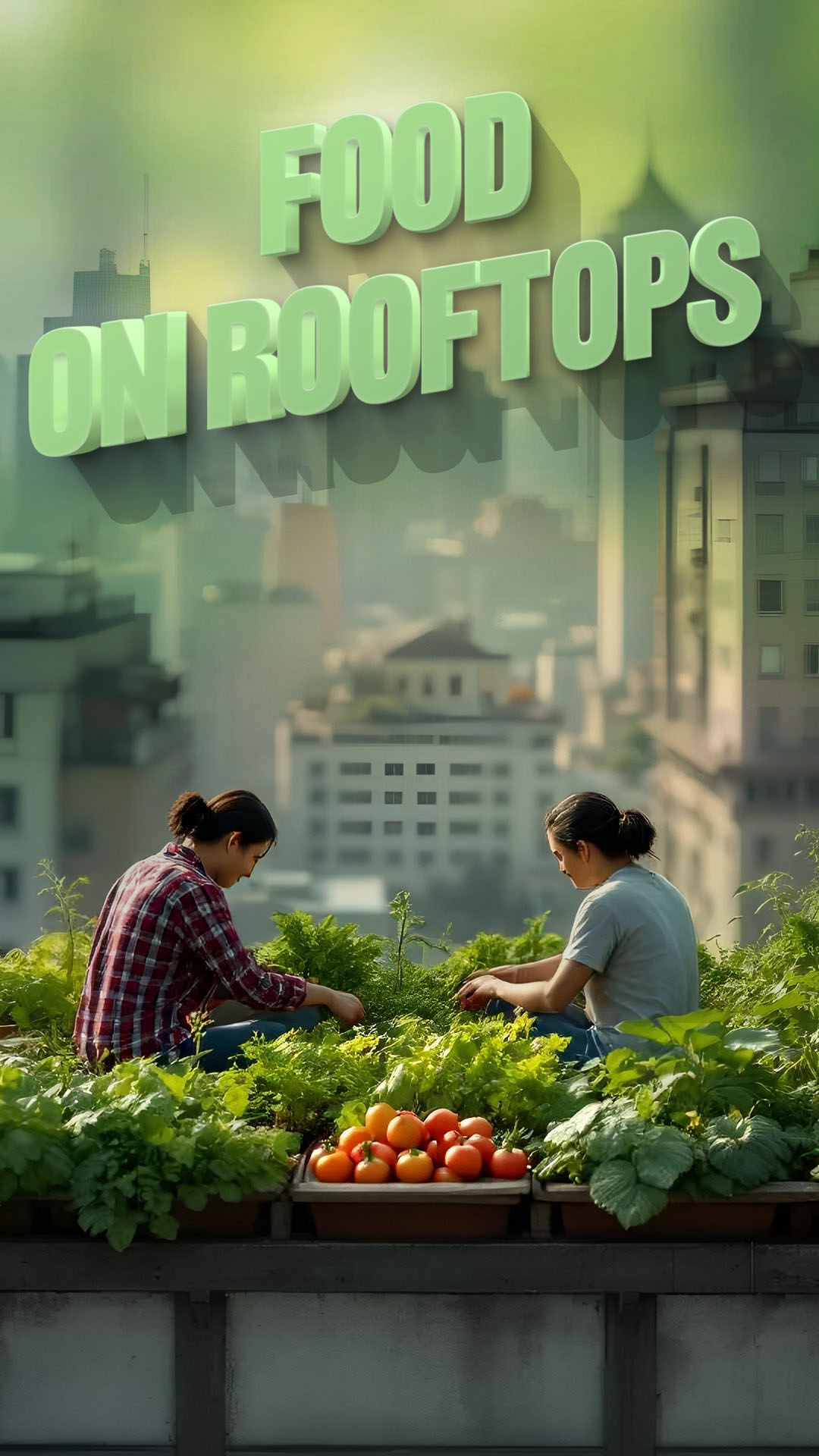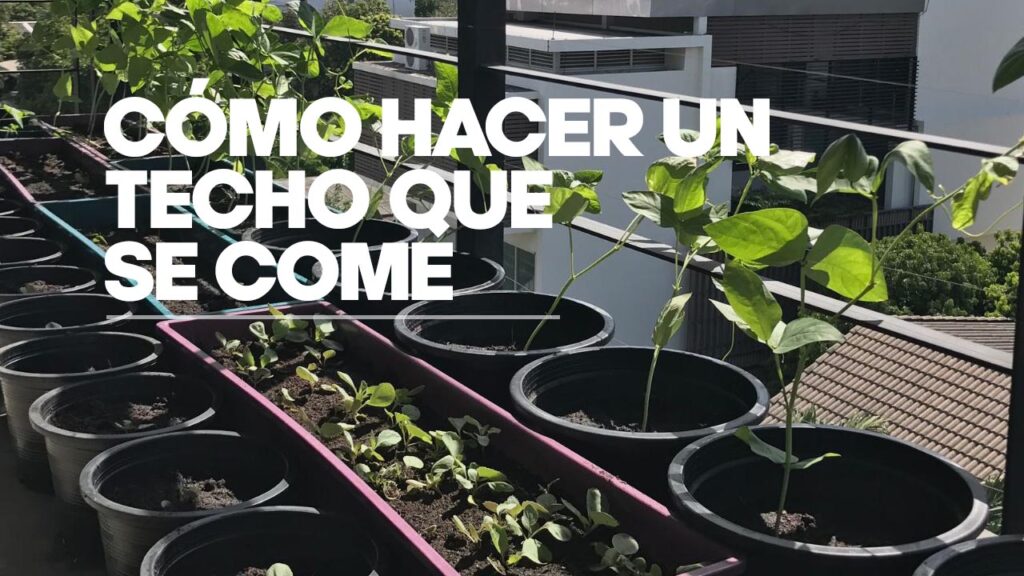Food Shortages, Poverty, and a Climate Crisis: One Green Roof at a Time
Hunger, food scarcity, and poverty are growing at an alarming rate in nearly every country around the world—and much of it is being fueled by climate change and global warming. But what’s really going on?
Well, for starters, once-fertile lands are becoming barren. On top of that, densely packed neighborhoods—especially in low-income areas—simply don’t have the space to grow food. It’s not just a land issue, it’s a systemic one.
This is exactly the case in the steep hillsides of Altos de Cazucá, a neighborhood in Soacha, just outside Bogotá, Colombia. Here, many families live without access to clean drinking water, proper sewage systems, or even designated areas for growing food. The result? Poor health conditions, widespread respiratory problems, and serious erosion due to scattered debris and a lack of green space.
But in the face of these challenges, something inspiring took root.
Carolina Forero, a young Colombian student with a vision for change, decided to turn her thesis project into a real-life solution for under-resourced communities. Her idea? The “edible roof,” or ecoroof—a simple, smart system that transforms rooftops into small-scale vegetable gardens. With the support of the Catalina Muñoz Foundation, the project came to life in 2012.
Through hands-on workshops, Carolina taught local residents how to grow lettuce and radishes right on their rooftops using a clever setup made from reused 2-liter PET bottles and rainwater collected in buckets. As you can see in the photos, nearly everything is recycled—except for the drip irrigation system, which helps distribute water efficiently.
Rooftop Farming in the City: 5 Real-Life Green Projects Growing Food in Tight Urban Spaces
Urban farming is no longer just a trend — it’s a movement reshaping how we grow, share, and think about food in cities. From small rooftops in Latin America to sprawling greenhouses atop New York buildings, people are proving that growing veggies and greens in compact spaces is not only possible but also transformative.
Here are 5 inspiring, real-world examples of rooftop farming projects in Latin America, the U.S., and Canada that are growing food, building community, and making cities more sustainable — one tomato at a time. 🍅
1. Terrazas Verdes – Medellín, Colombia
Led by: Carlos Alberto “Nene” Sánchez and the creative team at Son Batá, with the help of local moms and people with mobility challenges.
The Project: In some of the city’s most underserved neighborhoods, this group has turned 32 rooftops into lush, productive hydroponic gardens.
Why It Matters: It supports over 5,000 people, creates jobs, empowers women, and transforms concrete spaces into places of growth — both literal and social.
2. Brooklyn Grange – New York City, USA
Founded by: Ben Flanner, Anastasia Plakias, and Gwen Schantz in 2010.
The Project: One of the world’s largest rooftop soil farms, spread across three rooftops in Brooklyn and Queens (over 140,000 square feet!).
Why It Matters: Grows 80,000 pounds of organic vegetables each year, runs New York’s largest rooftop beekeeping operation, and supplies fresh food to restaurants and markets.
3. Lufa Farms – Montreal, Canada
Founded by: Mohamed Hage and his team.
The Project: Lufa operates four rooftop greenhouses across industrial buildings, covering nearly 300,000 square feet.
Why It Matters: They grow pesticide-free produce all year round, deliver over 20,000 food baskets per week, and drastically cut down on food miles and water use.
4. Gotham Greens – Brooklyn, USA
Founded by: Viraj Puri and Eric Haley in 2011.
The Project: A pioneering network of hydroponic greenhouses built on rooftops in urban areas, starting with their first location in Brooklyn.
Why It Matters: Their method uses 95% less water than traditional farming, grows up to 30 times more per square foot, and provides ultra-fresh greens to local stores and restaurants.
5. Science Barge – Yonkers, New York
Managed by: Groundwork Hudson Valley and originally launched by New York Sun Works.
The Project: A floating greenhouse on a barge docked in the Hudson River, using solar panels, rainwater, and zero-emissions technology.
Why It Matters: Besides being 100% off-grid, it doubles as a learning center for students and curious visitors who want to explore clean, local food production.
So, Why Grow Food on Rooftops?
Urban rooftop farms aren’t just cool-looking — they’re game-changers in how cities can become more livable, resilient, and tasty. Here’s why they matter:
Freshness & Food Security: Growing food in the city means fewer trucks, fewer emissions, and way fresher greens on your plate.
Smart Use of Space: Rooftops are often overlooked. Turning them into gardens transforms dead zones into productive, living spaces.
Stronger Communities: These projects create jobs, offer education, and empower local communities — especially women and young people.
Eco Impact: They reduce urban heat, save water, encourage biodiversity, and lower carbon footprints.
Learning & Awareness: Rooftop farms become hubs for learning about sustainability, healthy eating, and reconnecting with nature.

Credits: ideasverdes.es
Cómo fabricar un techo que se come
https://www.ideasverdes.es/techos-verdes-que-se-comen/?fbclid=IwAR2KHlavNow43XgA73B6ipxzbk9_bIvuSuYEs4JxbFyjQ9y7j2j1eoTKZso

